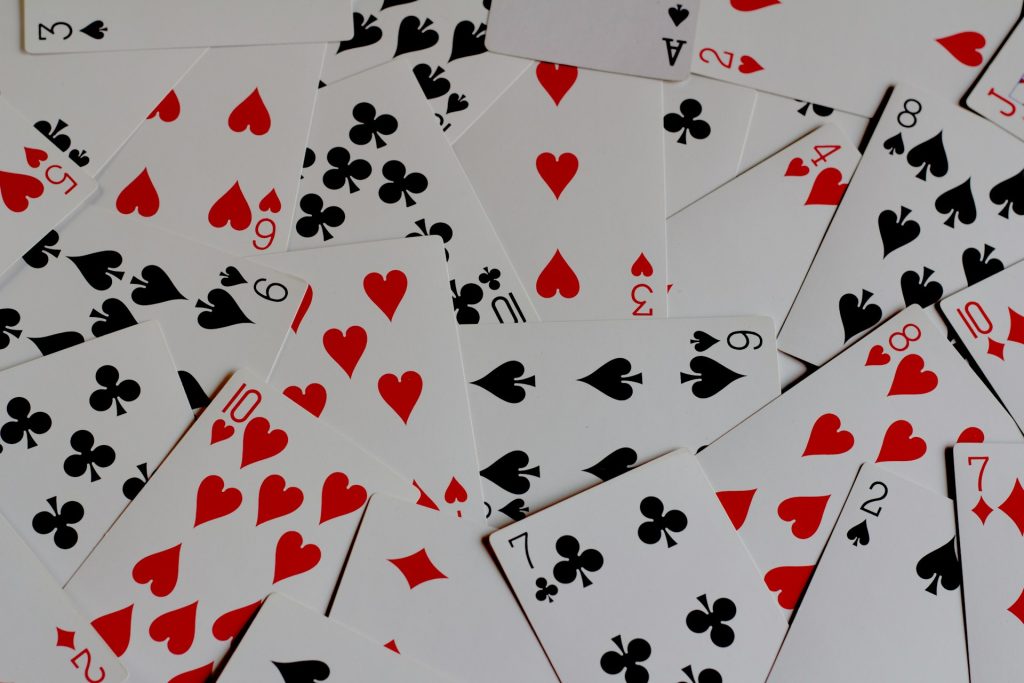If you’ve ever played cards, you’re likely familiar with the standard deck of 52 playing cards. However, have you ever stopped to wonder about the distribution of red cards within that deck? In this article, we’ll delve into the composition of a standard deck of cards and answer the question: How many red cards are there in a deck of cards?
Understanding a Standard Deck of Cards
A standard deck of cards is a familiar sight to most, but its structure holds significance. Comprising 52 cards, it is divided into four suits: hearts, diamonds, clubs, and spades. Each suit features 13 cards, including the Ace, numbered cards 2 through 10, and the face cards—Jack, Queen, and King. This division into suits and ranks facilitates a plethora of card games, from the simplicity of Go Fish to the complexity of Bridge and Poker. The design of the deck has evolved over centuries, influenced by cultural, historical, and practical factors. Understanding this structure lays the foundation for exploring the distribution of red cards within the deck and sheds light on the intricate world of card gaming.
Identifying the Red Cards
Now, let’s focus on the red cards. In a standard deck, two of the four suits—hearts and diamonds—are red. Therefore, the red cards in a deck are comprised of all the cards from these two suits. Hearts and diamonds are often associated with emotions, love, wealth, and vitality, adding depth to the symbolism of the red cards in gameplay. Whether you’re enjoying a friendly game of poker with friends or engaging in a high-stakes round of bridge, understanding the significance of the red cards can add an extra layer of intrigue and strategy to your gaming experience. So, next time you’re holding a hand of red cards, remember the rich history and symbolism behind them, and let them guide you to victory on the gaming table.
Counting the Red Cards
To determine the exact number of red cards in a deck, we simply need to count the cards in the hearts and diamonds suits. Each suit contains 13 cards, so when we add the number of hearts (13) to the number of diamonds (also 13), we get a total of 26 red cards.
Why Are There 26 Red Cards?
You might be wondering why there are precisely 26 red cards in a standard deck. The reason lies in the history and tradition of playing cards. Early European card decks were influenced by tarot cards, which had four suits representing different aspects of life. The red suits—hearts and diamonds—often symbolized positive aspects such as love, passion, wealth, and vitality. Over time, this symbolism became standardized, leading to the composition of modern playing cards.
Red Cards in Gameplay
Understanding the distribution of red cards can be useful in various card games. For instance, in games like poker or bridge, knowing the proportion of red cards can help players strategize their moves and assess the likelihood of certain hands.
In conclusion, there are 26 red cards in a standard deck of 52 playing cards, comprising the hearts and diamonds suits. This even distribution of red and black cards adds to the balance and symmetry of the deck, reflecting centuries of tradition and symbolism. Whether you’re a casual card player or a seasoned gamer, understanding the composition of a deck can enhance your appreciation and enjoyment of card games. So, next time you’re shuffling a deck of cards, take a moment to appreciate the 26 red cards waiting to be dealt.

